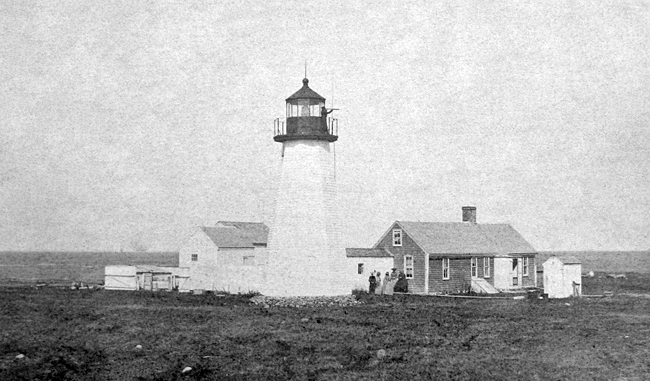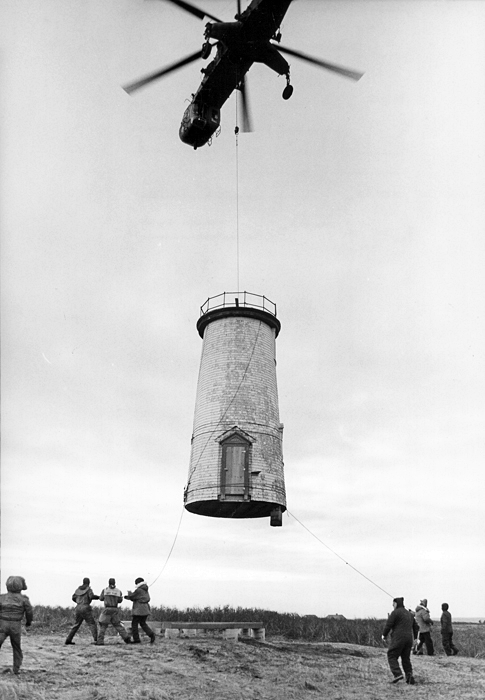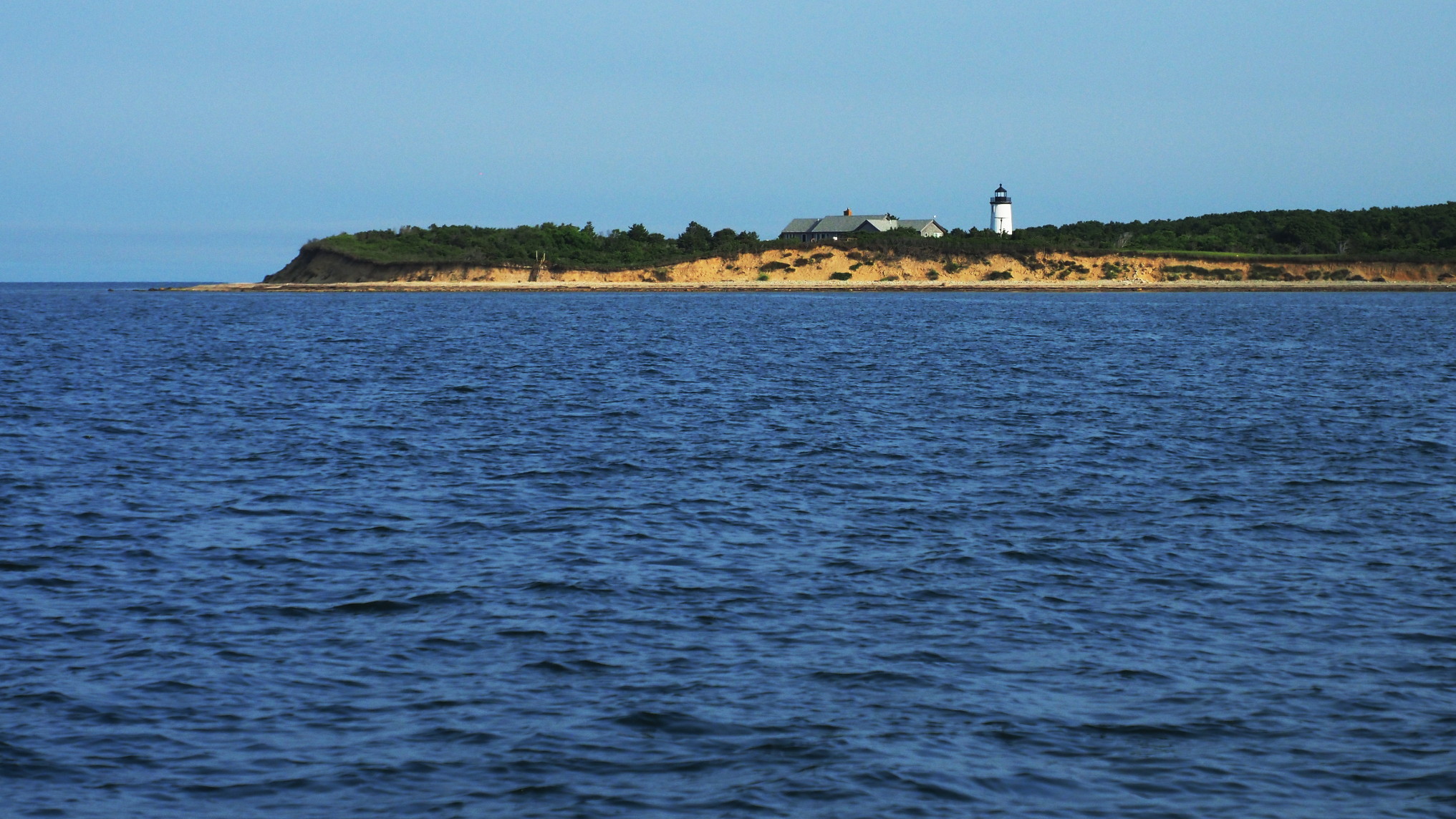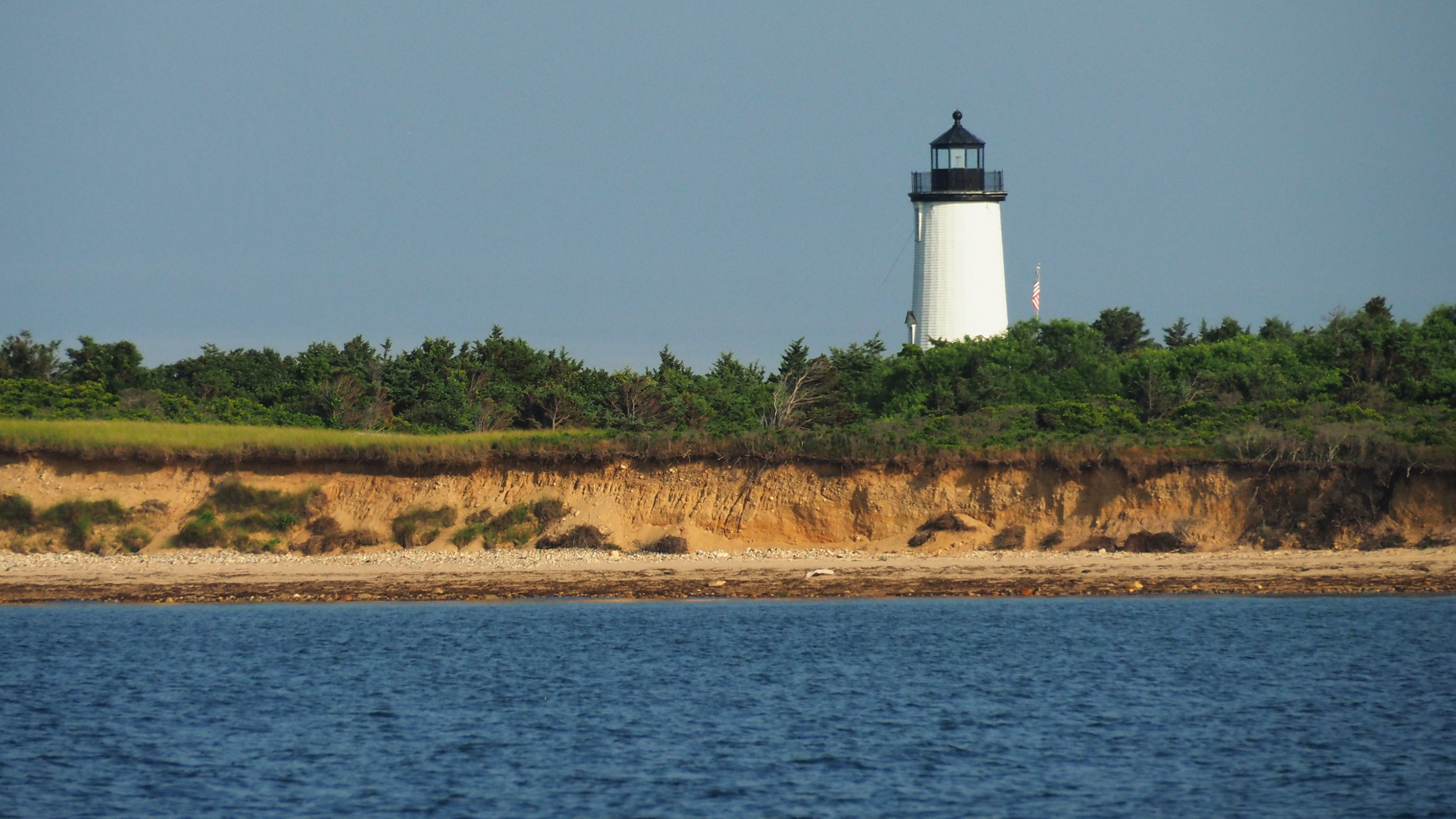Cape Poge Light
This is the first in a series of posts exploring the lighthouses we saw on our recent cruise Beyond The Cape.
As we were entering the channel towards Edgartown Harbor, to my surprise I saw a nice white lighthouse at some distance to our port (that is, to the left).
I was either not aware of it, or forgot about it. It was my first time approaching Edgartown by water, too, or I would had remembered that light from before. The lighthouse turned out to be Cape Poge Light on the tip of Chappaquiddick Island, still functional and navigationally important light.
Chappaquiddick itself is a piece of land right to the east of Martha’s Vineyard. Some years it is connected to Martha’s Vineyard by a narrow sandbar on its southern, and other years, when the winds and the waves breach the sandbar, it isn’t. Wikipedia calls it an “occasional island”. The last time the sandbar was breached was from 2007 to 2015; now the two islands are happily connected again, but Chappaquiddick is still called an “island”.
Chappaquiddick also has a place in the American political history. In 1969, late after a party in Chappaquiddick the US Senator Ted Kennedy (1932–2009), a younger brother of the President John F. Kennedy, was driving a staffer, a young woman named Mary Jo Kopechne, to the ferry to Edgartown. Presumably, both were pretty drunk at the time. Kennedy missed a bridge and drove the car into the water. He managed to swim out, and Kopechne drowned in the car. This “Chappaquiddick incident” has destroyed his chances to be nominated for presidency.
He went on to serve as a senator for 47 years, and did a lot of good for Massachusetts, including protecting at least two lighthouses: Great Point Light in the nearby Nantucket, and Boston Light.
People get to Chappaquiddick via a ferry from Edgartown Harbor — the one Ted Kennedy was driving to. The ferry runs pretty much non-stop from early morning till midnight, crossing all the 527 feet of the narrow channel between Edgartown and Chappaquiddick (we had to avoid it as we were dinghying into town).
Seeing Cape Poge Light on our approach to Edgartown had inevitably picked my interest. So when Lena proposed to rent bikes in Edgartown, I immediately got excited. A bike ride from Edgartown to the lighthouse looked like an easy 7-mile ride on Google Maps, and I though we could easily bike there, explore the lighthouse, and bike back.
That plan was thwarted by the thick fog that came out of nowhere and blanketed the town. We decided that biking in the fog is no fun, and the bike ride was aborted.
Further investigation reveals that we probably wouldn’t be able reached the lighthouse anyway. It turns out that Google Maps has lied to us again: out of those 7 miles, 3.5 miles are over sand roads, impassable on a bike or in a regular car.
My dad and I had a similar experience with Great Point Light in Nantucket: what looked like an easy bike ride on Google Maps in reality turned into a long, slow hike over sand (5.5 miles each way). Back then it was totally worth it, just took forever. So I can definitely see a bike trip to Cape Poge Light in my future, just better planned and with no fog.
The first lighthouse — a 35-foot wooden tower — was built there in 1801. Back then, Edgartown was an important whaling port, and required careful navigation.
Since then, the town lost its whaling importance, and (not unlike Nantucket) eventually reinvented itself as a summer residence place for the rich, and a tourist destination.
The lighthouse was, meanwhile, rebuilt three times and moved many times, too. A situation that is typical for Cape Cod: the waves and the wind — mostly the wind — keep eroding the sand dunes, and lighthouses have to retreat, or to perish.

The current white tower (still wooden, and still 35 feet tall) was moved back four times. Last time, in 1987, it became the first lighthouse to be moved by a helicopter.

As happened to many lighthouses in our parts, the Coast Guard was looking to get rid of Cape Poge Light’s building as a cost-cutting measure. Nowadays it’s managed by the Trustees of Reservations, while the Coast Guard still maintains the light itself: white flash every 6 seconds.
Meanwhile, having aborted our bike exploration plans, we decided to sail to Cape Poge instead. Somehow, the fog stayed contained to Edgartown, and while we proceeded along the beautiful, mostly unspoiled Chappaquiddick shoreline, the sun was shining, the wind was blowing, the water was dark blue, and the crew was in excellent spirits.
The white lighthouse tower, easily visible from the water, marks the tip of Caper Poge — the northeast tip of Chappaquiddick. Clearly an important navigational marker. We originally planned to send a dinghy party to explore the lighthouse, but couldn’t figure out an easy way to do it from the water either: they moved it too far away by a helicopter!

So we just sailed by, took pictures, and headed back to spend the night at an anchorage. I’ll surely be back, by foot, to hike those three and a half miles by sand, and finally meet Cape Poge Light in person.

Subscribe via RSS